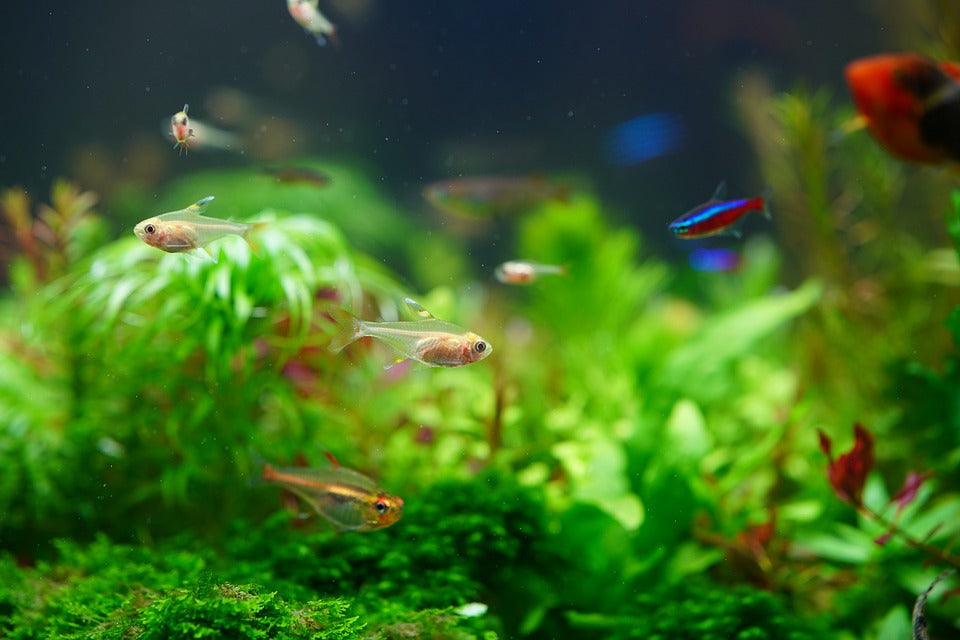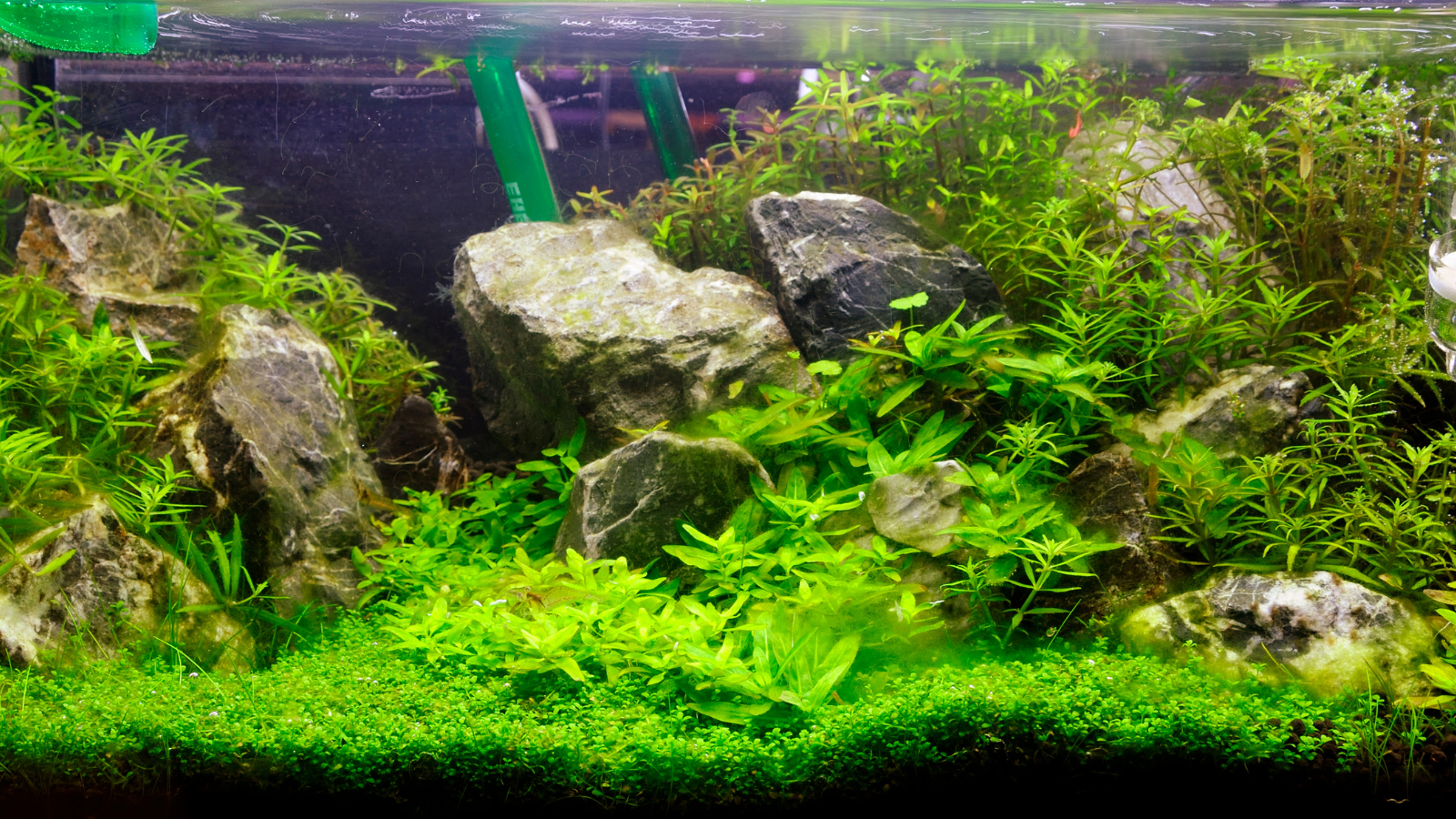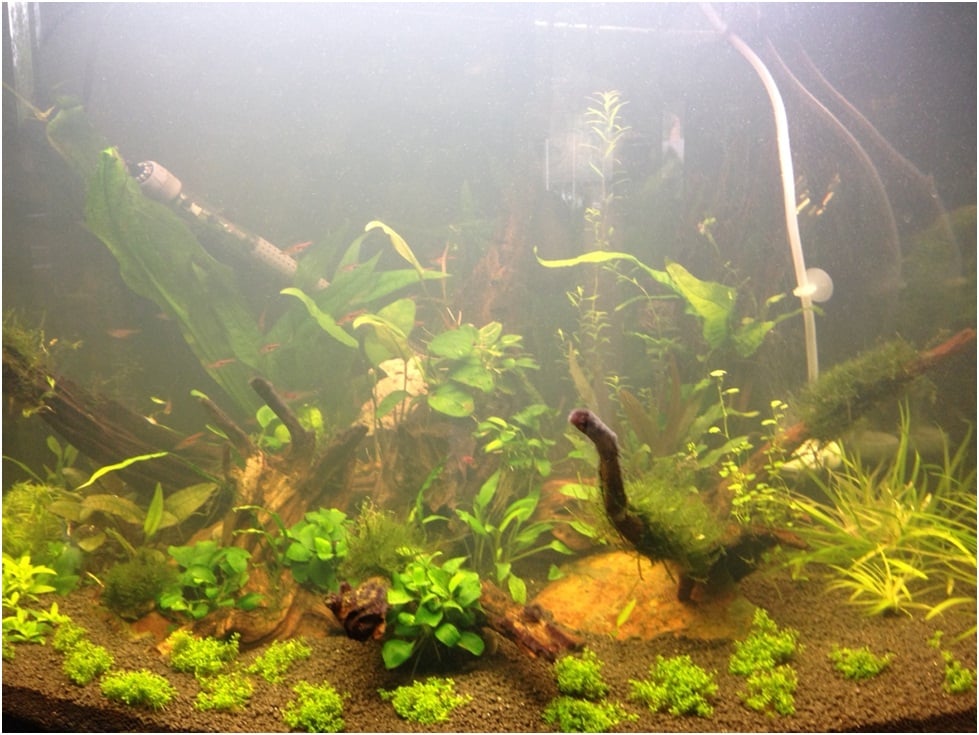
Changing the water in the aquarium
This is one of the basic maintenance activities that should be performed in the aquarium. In aquariums, due to the decomposition of organic waste, fertilization and excretion of faeces by animals, harmful substances or compounds may accumulate and may cause excessive growth of algae. Partial water changes are meant to remove excess water, and also help maintain parameters at levels appropriate for healthy fish and plants. The water change should be done once a week, which helps to systematize the care of the freshwater aquarium, controlling the parameters and fertilizing the plants.
A regular water change is an activity that is closely related to several other activities that keep the tank clean. We do weekly water changes in order to impove water parameters, partially remove dirty tank water and replace it with the new water and remove derbis of plants or fish. Before we proceed to it, appropriate tests should be performed to determine the condition of the fish tank. If there are no problems with algae in the aquarium, it is enough to measure the pH, KH and GH. However, if we have a problem with an excessive amount of algae, PO4, NO3, and Fe should be additionally measured.
It is important to turn off the heater and filter before doing the water change.
The amount of replaced water depends on the current condition of the tank, and should be between 20-50%. In the case of problems with algae, larger changes are used, and if nothing wrong happens with the tank, fish and plants are happy, the water change oscillates around 30%. In case of the new aquarium, the water changes should be larger and even more frequent because of the nitrogen cycle.
The water change itself is not only about draining the water and refilling it. Before we start it, the aquarium glass should have deep cleaning of algae. Algae that float in the aquarium water after such an operation will be partially removed with the water poured from the aquarium.
Another caring activity performed during the water change is taking out the silt from the bottom . During it, you should suck up silt, faeces and plant debris lying on the bottom. In the case of substrates for plants or shrimps, a small diameter hose (9-12 or 12-16 mm) will work well, which, when draining the tank water, must be waved vigorously over the bottom, which will cause the dirt on the bottom to stick in and be sucked in by the hose.
In aquariums with a large number of plants, they are trimmed during the water change, i.e. they are shortened and shaped (find more about how to trim plants properly HERE). Plant fragments floating in the water should be sucked out during the water change.
If we use tap water for water changes, it is very likely that the evaporating water leaves a sediment of calcium and magnesium on aquarium glass on the border of the water surface, i.e. the so-called scale. During the water change, it can be initially mechanically removed with a razor blade and then wiped with a paper towel soaked in vinegar, which perfectly removes the tarnish.
In the case of large aquariums, the water change can be facilitated by using a garden hose to drain the water, which can be used to pour the tank water into the nearest toilet or sink, for example. With the same hose, the new water can be poured into the aquarium, if it is connected to the place of the shower head or to the tap after using the appropriate adapter.
After each water change, remember to use an appropriate water conditioner that neutralizes heavy metals, ammonia and chlorine or other substances that may harm your fish. In addition, it is recommended to supplement the tank water with beneficial bacteria responsible for the purity of the water.
Developing a habit of regular water changes will help you to deal with many problems and improve the condition of fish, plants and aquarium water quality. Together with replacing tank water you also remove contamination existing in the aquarium water, e.g. fish waste and support the filtration at the same time. If you want to learn more about filtration and filter media in aquariums, we are happy to present you our Guide to filtration in the aquarium.


